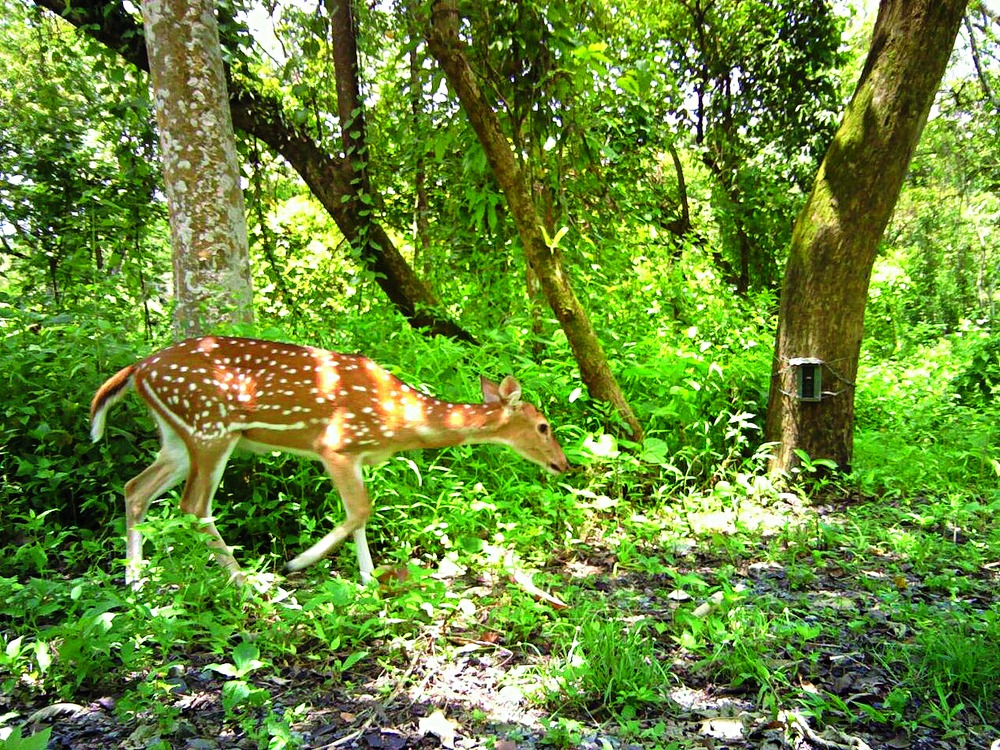
Guwahati, Jan. 17: The sighting of a spotted deer commonly known as chital after two decades has lifted the spirits of Manas National Park - a World Heritage Site - otherwise plagued by poaching and encroachment.
The deer was sighted through camera trapping during an ongoing tiger estimation in the park.
"People used to say there is spotted deer in Manas but there was no documentary evidence for the past two decades. This is the first scientific evidence and has given us hope. Conservation is paying dividends it seems," H.K. Sarma, field director, Manas tiger reserve, told The Telegraph.
Chital is listed as "least concern" in the IUCN Red List because it occurs in a very wide range within which there are many large subpopulations. Though it is still declining in some sites (particularly outside protected areas), it is nowhere near the rate required to qualify even as "near threatened".
The chital is found in India, Nepal, Bhutan, Bangladesh and Sri Lanka.
"We are yet to analyse the data but spotted deer is an important find. We have been told a good number of tiger cubs have been also spotted," Sarma said, adding that the final report will take some time. Manas got back its World Heritage Site tag in 2011.
He said the deer was spotted at Panbari range where a lot of protection work needs to be done. Wildlife NGO Aaranyak provided support for camera-trapping.
Chital is a prolific breeder and thrives in a variety of habitats and the highest densities are reported from moist and dry deciduous forest areas, especially adjoining dry thorn scrub or grasslands.
"There is hope surely in Manas and we all have to work for it. This is a good finding and we must not squander this opportunity," wildlife conservationist Bibhab Talukdar said.
The park has informed the World Heritage Committee that it has complied with all recommendations made by it in a 2015 meeting and has been able to maintain the outstanding universal value of the property.
Manas National Park recently added 350 square km in the west (Chirang district) and the park is now spread over 850 square km. Evictions have been successfully completed in December. Thirty per cent of the Manas Tiger Conservation Foundation funds are also earmarked for support to the local community by participation, preparation of micro-plan and stakeholdership in conservation planning.
Trans-boundary cooperation with Royal Manas National Park (which is on the tentative World Heritage Site list) has been formalised and collaborative surveys on research and monitoring of flagship species like tigers have been carried out.










